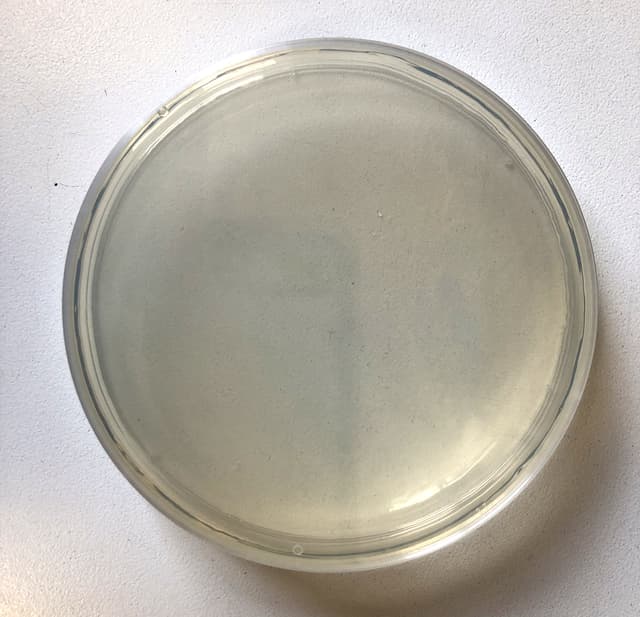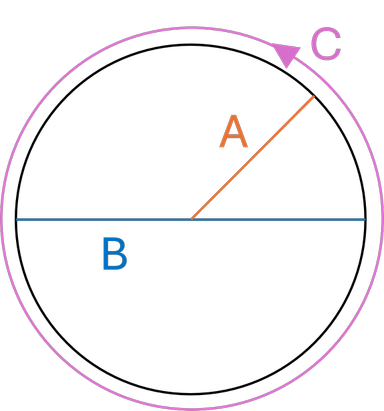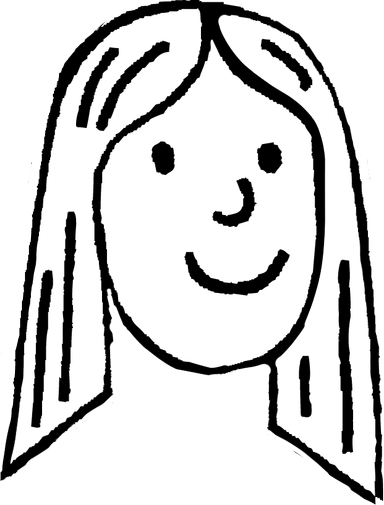The effect of antimicrobial substances on bacterial growth: analysis and conclusions
I can compare the effectiveness of antimicrobial substances on bacterial growth on an agar plate by measuring clear ‘zones of inhibition’.
The effect of antimicrobial substances on bacterial growth: analysis and conclusions
I can compare the effectiveness of antimicrobial substances on bacterial growth on an agar plate by measuring clear ‘zones of inhibition’.
These resources will be removed by end of Summer Term 2025.
Lesson details
Key learning points
- The diameter of a clear zone of inhibition around an antimicrobial disc can be measured.
- The areas of clear zones can be calculated using 𝜋r² and compared to investigate antimicrobial effectiveness.
- The larger the clear zone of inhibition, the more effective the antimicrobial has been in killing the bacteria.
- The importance of testing the effectiveness of antimicrobials in clinical settings.
Keywords
Antimicrobial - A substance that slows down or stops the growth of microorganisms, such as bacteria.
Agar plate - A Petri dish containing a growth medium solidified with agar jelly, used for culturing microorganisms.
Zone of inhibition - The clear area around an antimicrobial disc on an agar plate where bacterial growth has been stopped.
Aseptic technique - Practical methods used to prevent contamination by unwanted microorganisms.
Common misconception
Pupils often use the diameter instead of the radius when calculating the area of a clear zone of inhibition around a disc.
Remind pupils that we use 𝜋r² to calculate the area, so they need to find the radius first.
To help you plan your year 11 biology lesson on: The effect of antimicrobial substances on bacterial growth: analysis and conclusions, download all teaching resources for free and adapt to suit your pupils' needs...
To help you plan your year 11 biology lesson on: The effect of antimicrobial substances on bacterial growth: analysis and conclusions, download all teaching resources for free and adapt to suit your pupils' needs.
The starter quiz will activate and check your pupils' prior knowledge, with versions available both with and without answers in PDF format.
We use learning cycles to break down learning into key concepts or ideas linked to the learning outcome. Each learning cycle features explanations with checks for understanding and practice tasks with feedback. All of this is found in our slide decks, ready for you to download and edit. The practice tasks are also available as printable worksheets and some lessons have additional materials with extra material you might need for teaching the lesson.
The assessment exit quiz will test your pupils' understanding of the key learning points.
Our video is a tool for planning, showing how other teachers might teach the lesson, offering helpful tips, modelled explanations and inspiration for your own delivery in the classroom. Plus, you can set it as homework or revision for pupils and keep their learning on track by sharing an online pupil version of this lesson.
Explore more key stage 4 biology lessons from the Medicines and new treatments for disease unit, dive into the full secondary biology curriculum, or learn more about lesson planning.

Equipment
agar plate upon which bacteria have been cultured with antimicrobial discs, ruler, calculator
Content guidance
- Risk assessment required - equipment
Supervision
Adult supervision required
Licence
Starter quiz
6 Questions



sterilises the wire to avoid contaminating the bacteria bottle
prevents unwanted microorganisms from settling on the agar
prevents bacteria contaminating the air
kills microorganisms on work surfaces




Exit quiz
6 Questions







